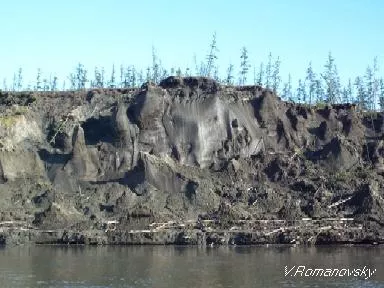Cryosphere glossary
the state of the atmosphere, mainly with respect to its effects upon life and human activities; distinguished from climate by focusing on short-term (minutes to about 15 days) variations of the atmosphere state.
glacier ice that has been exposed to sun or warm wind so that the boundaries between ice crystals are partly disintegrated.
the processes of ablation and accumulation which gradually eliminate irregularities in an ice surface.
ice-bearing permafrost in which all the soil particles are held together by ice.
the dominant west-to-east motion of the atmosphere, centered over the middle latitudes (35 to 65 degrees latitude) of both hemispheres.
a condition in which daylight is diffused by multiple reflections between a snow surface and an overcast sky; contrasts vanish, and the observer is unable to distinguish the horizon or any snow surface feature.
created by the World Meteorological Convention and recognized as a special agency of the United Nations in 1951; the WMO consists of more than 185 member countries; and facilitates international cooperation in all aspects of meteorology.
any scientific project (field experiment, inter-comparison, etc.) internationally performed under the aegis of the World Meteorological Organization.
the world-wide, coordinated system of meteorological facilities and services provided by World Meteorological Organization members for the purpose of ensuring that all members obtain the meteorological information required both for operational work and for research; the essential elements of the WWW are: the global observing system, the global data-processing system, and the global telecommunication system.
A type of Pleistocene-age (formed 1.8 million to 10,000 years before present) permafrost that contains a significant amount of organic material with ice content of 50 to 90 percent by volume. Thawing yedoma is a significant source of atmospheric methane.
Image

A yedoma in Russia shows the thick layer of ice and carbon material exposed along this body of water.
Vladimir Romanovsky
a general category of ice that represents the transition between nilas and first-year ice; usually 10 to 30 centimeters (4 to 12 inches) thick.
the ratio of increase in stress acting on a test specimen, to the resulting increase in strain, under constant transverse stress.
the persistence of a nearly constant temperature, very close to the freezing point, during annual freezing (and occasionally during thawing) of the active layer.
that portion of the subsurface where the conditions of temperature and pressure are suitable for the formation and preservation of gas hydrates.